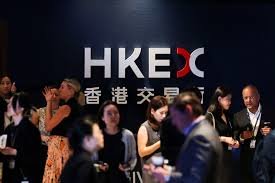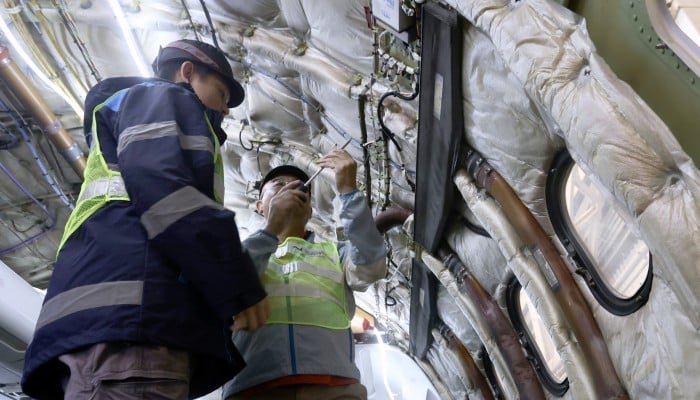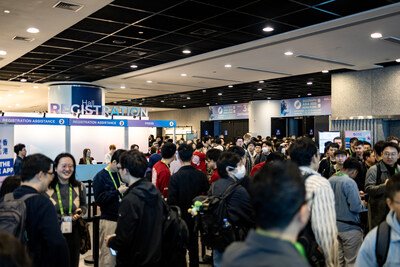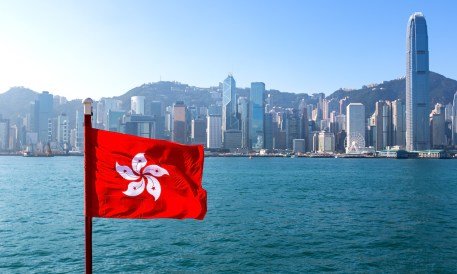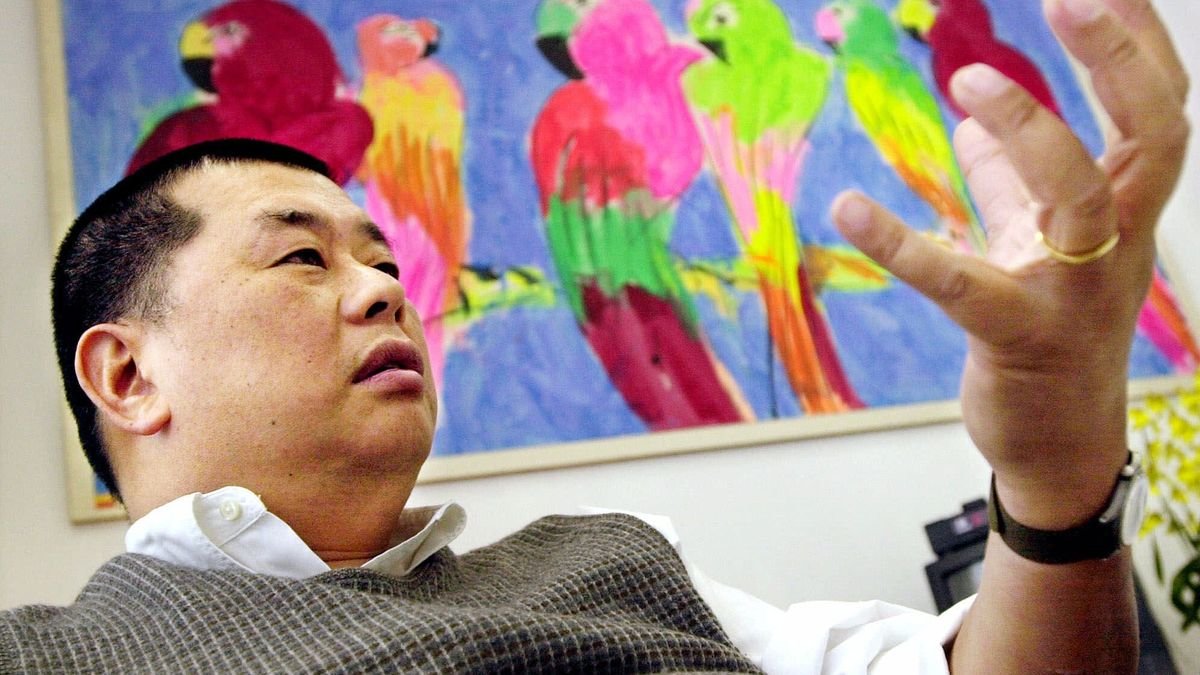
Standout star real estate in an extraordinary year
Each month we give you a VIP pass into the homes of the rich and famous as they buy and sell lavish properties. Over the course of 2020, we've taken a look inside over 100 celebrity homes and picked out the best of the bunch. From Dr. Phil's wacky mansion to Kylie Jenner's lavish Holmby Hills estate, click or scroll through the best celebrity homes from this year...
January: Shaquille O’Neal's LA mansion
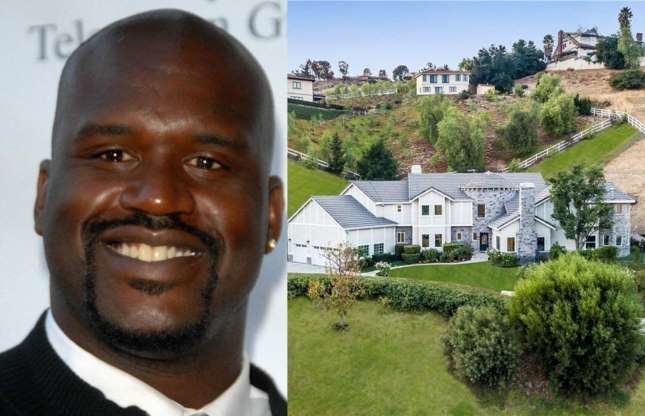
The start of 2020 saw the likes of Kelly Clarkson and Whoopi Goldberg put their homes on the market, however, a listing that caught our eye was that of former NBA all-star Shaquille O'Neal who put his sprawling Tudor-style home on the market for $2.5 million (£1.9m) in January. Situated in the gated Bell Canyon community in the Simi Hills, Los Angeles, the pad was surprisingly large and luxurious, considering its relatively low asking price. By September the star had reduced the price to just $2 million (£1.5m), and by November had mysteriously taken it off the market.
January: Shaquille O’Neal's LA mansion

Also known as "Shaq", the retired American basketball player has been through his fair share of houses and only purchased this pad in 2018 for $1.8 million (£1.4m). Built in 1990, the contemporary house channels Tudor design on the exterior but inside it's all about modern glamour. Just look at the two-storey foyer, with its dazzling white finish, porcelain flooring and sweeping staircase.
January: Shaquille O’Neal's LA mansion

There's a stunning formal living room with a vaulted beamed ceiling and a grand chef's kitchen that every foodie will adore – think marble countertops, custom cabinetry and stainless steel appliances throughout – plus, there's plenty of room for hosting lavish dinner parties in this seemingly endless space.
January: Shaquille O’Neal's LA mansion

The grand master bedroom is as big as some apartments, with its own sitting area, dual walk-in closets, two rainforest showers and a Jacuzzi tub. Outside, you'll also find an acre of manicured land, a heated pool, a hot tub and a fire pit, while the estate's community facilities include a state-of-the-art gym and numerous tennis courts. There's even parking for up to 14 cars. What more could you possibly need?
February: Dr. Phil's wacky Beverly Hills house

Back in February Selena Gomez's former Mediterranean mansion hit the market and NBA megastar Dwight Howard listed his amazing Washington penthouse. However, we can't look back and not mention Dr. Phil's wacky mansion which sold for $5.8 million (£4.4m), the exact price it was listed at. Occupied by his son, musician Jordan McGraw, the talk-show host bought the property in 2007 for just under $5 million (£3.8m) but never lived in the home himself. From the outside, the estate looks normal enough with a clay-tiled roof and stucco walls, but inside it's a different story...
February: Dr. Phil's wacky Beverly Hills house

The interior covers nearly 6,200 square feet of accommodation and definitely catches the eye. The entrance leads into a double-height vestibule that features a banister covered in what looks like snakes or vines and a bar that wouldn't look out of place on the set of a fantasy film. The lobby leads through to the dining room adorned with more quirky decorations, plus an unusual gun display.
February: Dr. Phil's wacky Beverly Hills house

Spread over two floors, the home has a total of five bedrooms and six bathrooms, plus a number of luxury amenities including a plush home theatre. Accented in a lavish purple hue, it features a huge day bed, textured walls and polished wood floors. Decorated in a bold gothic style, the mansion is full to the rafters with unusual figurines and decorations. The main living room is decked out in a myriad of patterns and colours, with the grand fireplace framed by a custom art display.
February: Dr. Phil's wacky Beverly Hills house

Relaxing in the back garden, the dramatic interior seems a world away. With manicured lawns, mature palm trees and sculpted hedgerows, the outdoor oasis also features a cabana with a fireplace and alfresco dining area. What more could you need in sunny LA?
March: Jon Bon Jovi's New Jersey estate
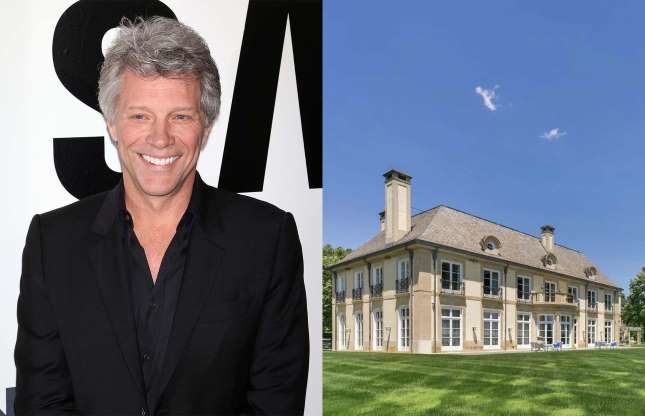
Come March the celebrity homes on the market included Anthony Hopkins' amazing clifftop home and Demi Lovato's Los Angeles mansion, which had a huge price reduction. We also took a look inside Jon Bon Jovi's palatial French-inspired mansion in New Jersey, which was on the market for a reported $20 million (£15m). Still listed for sale, the jaw-dropping mansion is located on the banks of the Navesink River and was designed by New York architect Robert A.M. Stern. Named High Point Estate for its breathtaking views over the water, it also includes 700 feet of private river frontage and a huge 15 acres of land.
March: Jon Bon Jovi's New Jersey estate
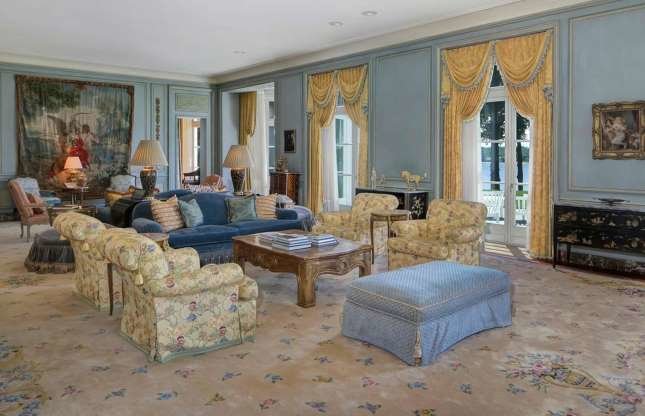
The property is made up of an 18,000-square-foot home, plus a three-bedroom carriage house, a barn, music studio and stables. The elaborate design of the six-bedroom, seven-bathroom main residence spares no expense. Inside, the main living room features a marble fireplace and an adjoining bar area. The classic French-style interior is full of regal touches including wall panelling and parquet floors.
March: Jon Bon Jovi's New Jersey estate

The traditional kitchen features a brick-barrelled ceiling with hand-painted beams, wooden floors and a large island sitting in the centre. The second floor is made up of two wings, one with four ensuite bedrooms including the master suite, and the other with two bedrooms, a bathroom and an extra kitchen.
March: Jon Bon Jovi's New Jersey estate
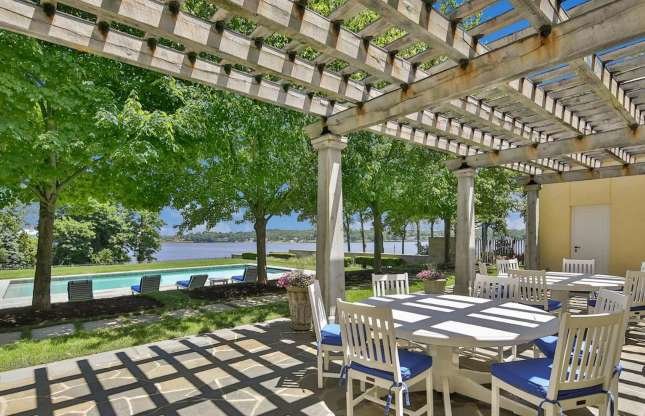
Elsewhere on the estate, there's a dock with a boat lift, seven double-door garages, two cabanas, plus an oversized swimming pool which is situated in the centre of the Renaissance-inspired gardens.
April: Zendaya's secluded ranch-style home

In April we took a sneak peek into the homes of Queer Eye's Tan France and Anne Hathaway, who listed her stunning New York penthouse. However, Zendaya made a standout purchase when she splashed out just under $4 million (£3m) on a secluded estate tucked away in the celebrity-favoured spot of Encino in Los Angeles. The home, which came with four acres of land, is completely hidden from prying eyes and sits at the end of a driveway, secured behind gates.
April: Zendaya's secluded ranch-style home
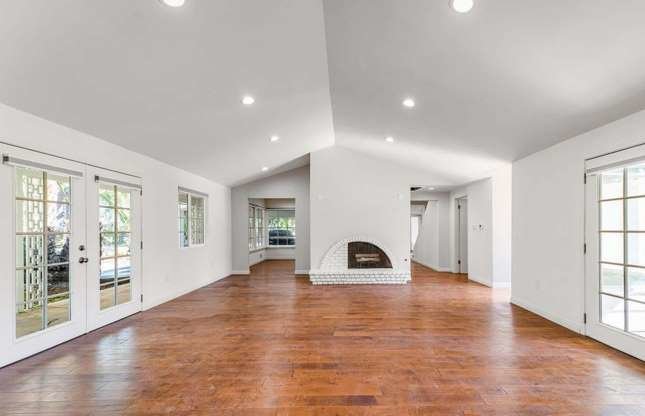
Built in 1939, the ranch-style main house has more than 5,000 square feet of living space, and includes hardwood floors throughout. On the lower floor sits a huge kitchen with granite countertops as well as this amazing living space, which features an arched fireplace in the centre.
April: Zendaya's secluded ranch-style home
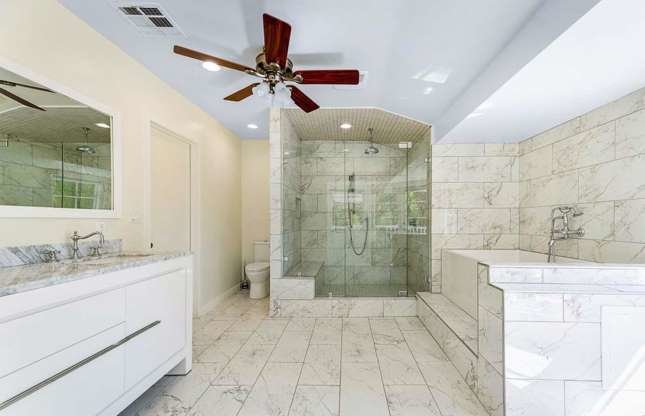
Overall there are five bedrooms and four bathrooms in the main house. This marble ensuite bathroom features a walk-in shower, bath and huge vanity unit, giving a taste of the luxury spread throughout the home.
April: Zendaya's secluded ranch-style home
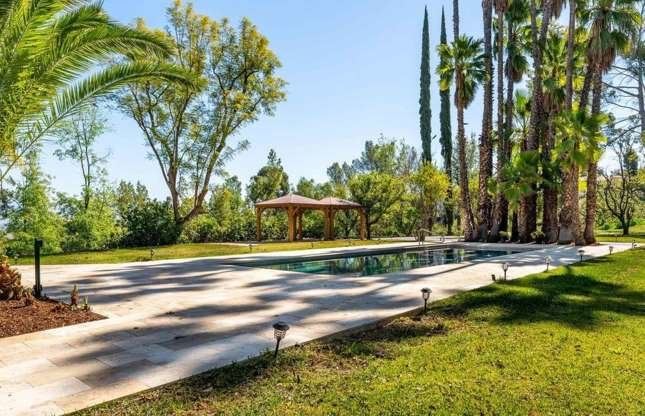
There’s also a shed-like guesthouse with its own bathroom and two bedrooms. Other estate amenities include a recently-installed swimming pool with an inset spa and stone patio surround, sprawling lawns and a circular motor court.
May: Kylie Jenner's Holmby Hills estate
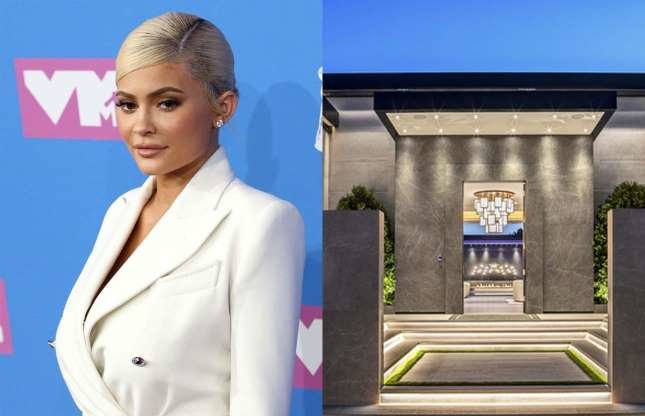
May saw a whole host of amazing star homes being snapped up including the late Tom Petty's home which was bought by Selena Gomez, and Kylie Jenner's purchase of a flashy mansion in Holmby Hills. The reality star expanded her already huge property portfolio by spending $36.5 million (£27.4m) on the single-storey, modern home that sits on nearly an acre of land and comes with two guest apartments and a dedicated guardhouse to keep the star as safe as possible.
May: Kylie Jenner's Holmby Hills estate

Clad in concrete, the fortress-like property has over 19,000 square feet of space inside and features a chef's kitchen with a marble island, a dining room with panelled walls and a huge seven bedrooms and 14 bathrooms.
May: Kylie Jenner's Holmby Hills estate

The glitzy home also isn't short of amenities with a home theatre, bars and games rooms, a gym, and a championship-level sports court.
May: Kylie Jenner's Holmby Hills estate
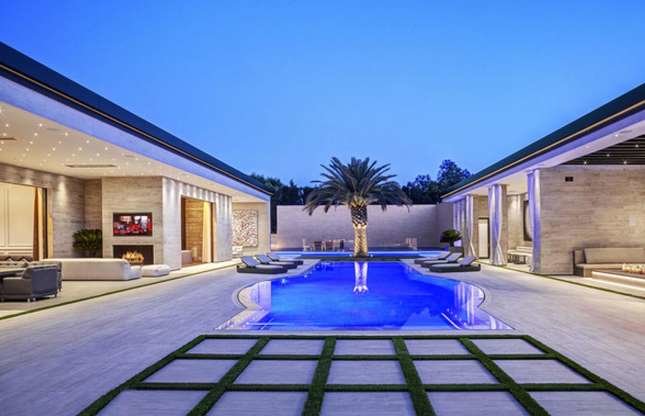
The plush living spaces are lined with sliding glass doors that lead out to the roughly 5,000 square feet of covered patio space and a stylish swimming pool, complete with a palm tree and atmospheric lighting. We wouldn't expect anything less from the queen of Instagram!
June: Elon Musk's house bundle

In June, Sylvester Stallone relisted his holiday home in LA and notoriously private power couple Mila Kunis and Ashton Kutcher listed their first marital home. However, nothing could compare to Elon Musk's offering; the entrepreneur put all seven of his homes on the market after the birth of his first child.
June: Elon Musk's house bundle
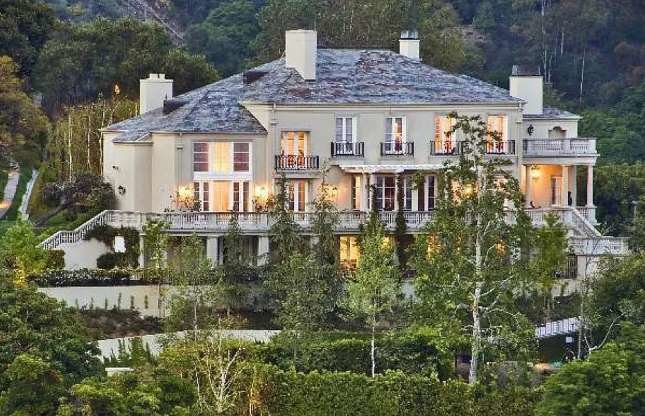
After announcing in a tweet that he would be "selling almost all of his physical possessions", including his properties, he was true to his word and went on to list two of his ultra-luxury homes, both in southern California. The first listing was this 16,000-square-foot home with seven bedrooms, 11 bathrooms, a two-storey library, pool, tennis court, fruit orchard and much more. Elon bought the property for $17 million (£12.8m) in 2013 and sold it for $30 million (£22.5m) in June this year for the same price it was listed at.
June: Elon Musk's house bundle

The second house listed was this property once owned by actor Gene Wilder. It went on the market for $9.5 million (£7.1m) and with 2,800 square feet of space, it has five bedrooms, five bathrooms, a pool and a private guest cottage. Musk purchased the home for $6.8 million (£5.1m) and had one request: "it cannot be torn down or lose any of its soul". He reportedly ended up selling it to Wilder's nephew for $7 million (£5.3m).
June: Elon Musk's house bundle

The billionaire then offered up five more properties for sale. On the market for $62.5 million (£46.9m), one package included four properties all in the Bel Air area of Los Angeles.
June: Elon Musk's house bundle

The homes were described on the listing as "a project for the big thinker, designed to showcase one of the best views in Los Angeles – from the city to the ocean and beyond". All within walking distance of one another, but not close enough to create an estate, it required a creative buyer or developer with a little vision.
June: Elon Musk's house bundle

Part of the four-home bundle, Musk purchased this house at the end of January 2019 for $6.4 million (£4.8m). The two-storey home has just under 3,400 square feet of space with four bedrooms and five bathrooms. With its quaint exterior, it looks like it belongs in the rural countryside rather than LA's affluent Bel Air. Musk reportedly ended up selling the huge bundle to Los Angeles developer Ardie Tavangarian for an undisclosed sum.
June: Elon Musk's house bundle

The final house of Elon's to hit the market was this century-old property just south of San Francisco in the town of Hillsborough. Listed for $35 million (£26.3m), the home mysteriously came off the market in November. It has unobstructed bay views with 10 bedrooms and 10 bathrooms. Musk purchased the home in 2017 for $23.3 million (£17.5m). While this might appear to be the plan of a celebrity property flipper, this tech billionaire has more lofty motivations for shedding his property portfolio.
July: Sean Connery's Mediterranean villa

In July we saw The Weeknd list his Hidden Hills compound and Ariana Grande snapped up a Montecito mansion. However, one listing that particularly caught our attention was that of the late James Bond star, Sean Connery. Perched on a spectacular hillside lot overlooking the Cap de Nice in the French Riviera, the sublime property is every bit the James Bond fantasy. In fact, it actually featured in the Bond movie Never Say Never Again, which was filmed in and around Nice. With one and a half acres of manicured terraced gardens, this beautiful building couldn't be any more star-worthy.
July: Sean Connery's Mediterranean villa
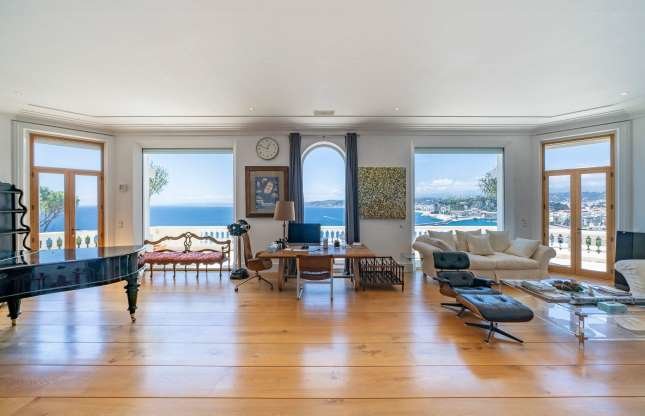
Connery bought Villa Le Roc Fleuri in the 1970s and it's been meticulously maintained ever since, resulting in a stunning interior that blends period charm with contemporary design. Spanning almost 11,000 square feet, the enchanting abode mimics Belle Epoque style and towers up six impressive floors. There are five bedrooms, five bathrooms and three grand reception rooms, each overlooking the ocean. Elsewhere, there's a wine cellar, a fitness room and a colossal indoor pool and spa.
July: Sean Connery's Mediterranean villa
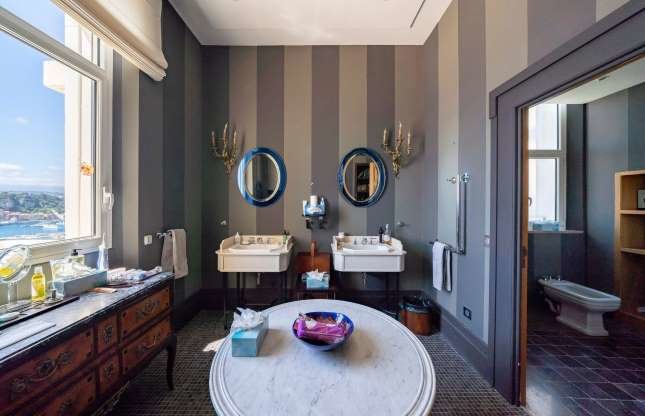
The house boasts plenty of high-end fixtures, including pretty mosaic-tiled floors, marble accents, floor-to-ceiling windows and stone staircases. There are endless wraparound terraces along the coastline, where quiet moments can be enjoyed among some of the finest scenery in the French Riviera. There's lift access to every floor and the master bedroom benefits from a huge ensuite, a dressing room and a walk-in wardrobe, as well as French doors that open onto a private balcony.
July: Sean Connery's Mediterranean villa
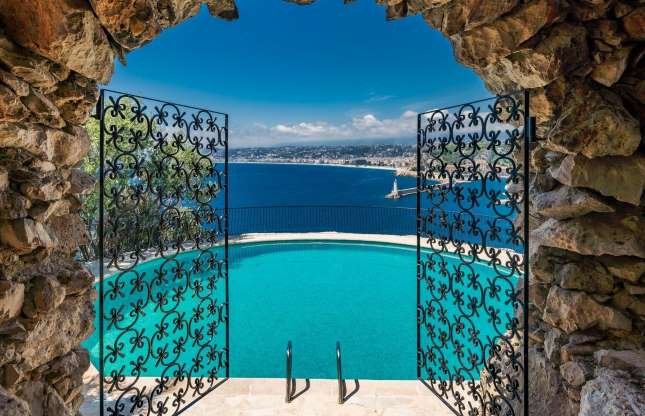
Yet the home's best feature is probably its marvellous terraced gardens. They come equipped with quaint winding pathways that lead down to the ocean and a saltwater swimming pool perched on the edge of a cliff, offering unobstructed views of the Promenade des Anglais and Nice city centre. There are also two independent guest villas for visiting friends and family. If you've fallen in love, then you'll need $36 million (£25.4m) to be in with a shot of buying this captivating compound that has yet to be snapped up.
August: J.Lo and Alex Rodriguez's Malibu mansion

The best celebrity real estate in August included the likes of Calvin Harris who was set to part ways with his Hollywood Hills retreat, and Jeffree Star's pink Calabasas mansion. But with her huge property portfolio bursting at the seams, Jennifer Lopez and her fiancé, Alex Rodriguez listed their beachfront oasis in Malibu for $8 million (£6m) and stole the spotlight. Spread over three floors, the super-private abode is hidden behind a secure courtyard entrance that's overrun with vines and trees. The couple snapped up the home for a cool $6.6 million (£5m) in January 2019.
August: J.Lo and Alex Rodriguez's Malibu mansion
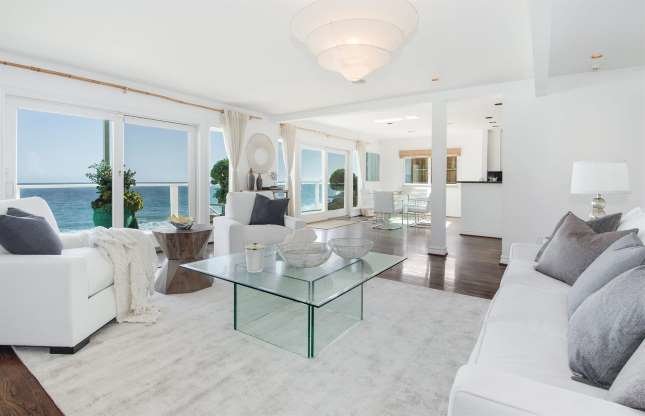
Decorated in mainly white, the living spaces are light and airy with floor-to-ceiling windows that open out onto the beautiful ocean views. The relaxed living space has stone tiled flooring and low ceilings and a small four-seater dining table and a bar.
August: J.Lo and Alex Rodriguez's Malibu mansion

Each of the four bedrooms has sea views, with the master suite featuring a built-in soaking tub, a walk-in wardrobe, a steam shower and a private balcony overlooking the beach.
August: J.Lo and Alex Rodriguez's Malibu mansion
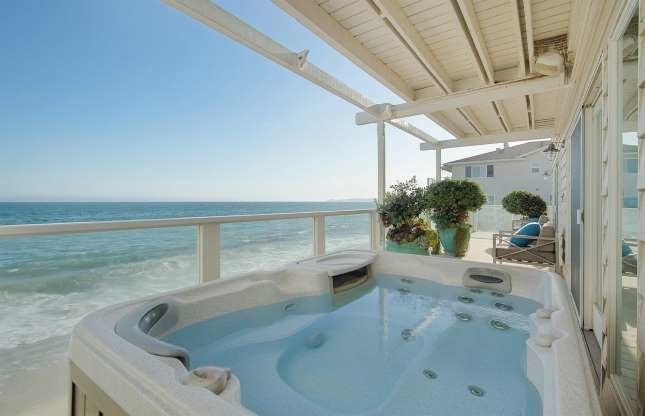
Other luxury amenities in the house include an upstairs screening room, a hot tub on the main floor's outdoor deck and a complete entertainment unit on the lower level, which has a wet bar and sauna. The home sold in September for $6.8 million (£5.1m).
September: Gordon Ramsay's coastal holiday home
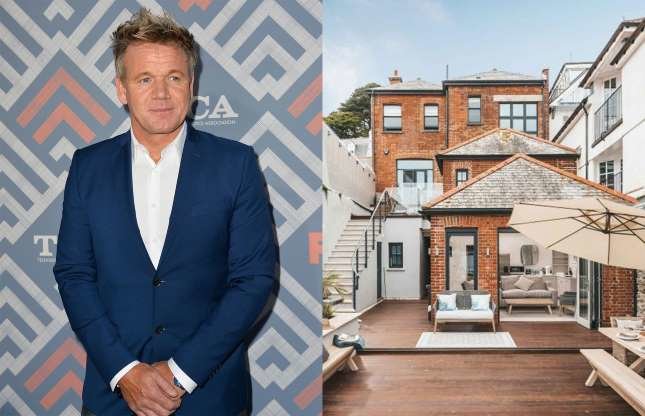
By the time September came around, Chrissy Teigan and John Legend were ready to part ways with their Beverly Hills family home and British chef Gordon Ramsay was set to sell his holiday home in the coastal town of Fowey in Cornwall, England which went on the market for $3.7 million (£2.8m). The culinary star purchased the home, which was formerly a bank, in 2017 for around $2.6 million (£2m). Ramsay has since renovated the home, which is a Grade II-listed building, to create a modern townhouse by the sea.
September: Gordon Ramsay's coastal holiday home
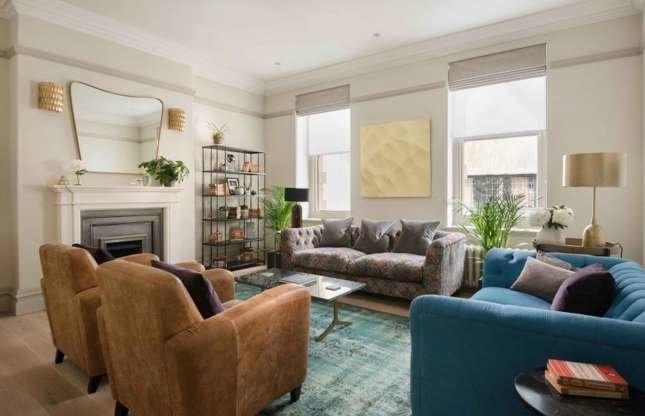
Spanning 2,800 square feet inside, the four-bedroom, four-bathroom home is spread over three floors and comes with waterfront views and private shoreline access. Offering two reception spaces, this formal living room with a fireplace and double-height ceilings offers an elegant spot to spend a cosy evening in.
September: Gordon Ramsay's coastal holiday home

One of the highlights, of course, is the kitchen. With green Shaker-style cabinets, high-quality appliances and a centre island, it's made for gourmet food prep. Open-plan with the dining zone, the room leads out to the harbour-facing deck through a set of glass French doors.
September: Gordon Ramsay's coastal holiday home
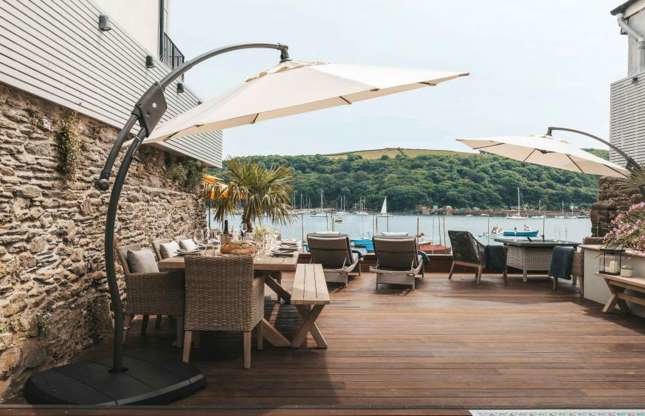
Just one of three properties that Ramsay owns in idyllic Cornwall, the residence's enclosed outdoor terrace is without doubt the pièce de résistance. Offering plenty of space for soaking up the sunshine and enjoying alfresco meals, the views across the water are second to none. Unsurprisingly, the house has already found a buyer! This chef really does have the Midas touch...
October: Joe Jonas and Sophie Turner's New York City condo
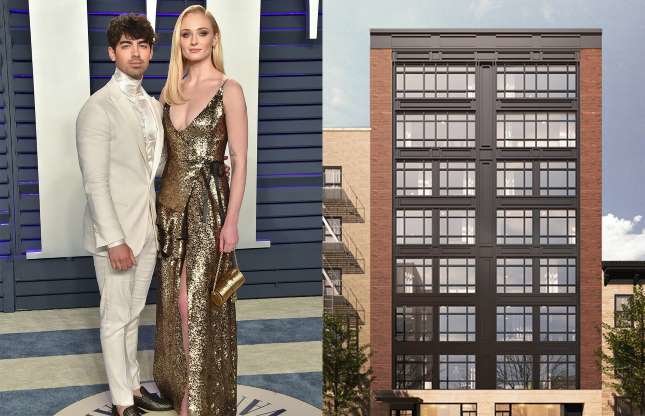
In October we took a look inside Chris Hemsworth's Malibu pad that was on the market and shared the news that new parents, Joe Jonas and Sophie Turner, who recently settled into their marital home in Los Angeles' Encino neighbourhood, had listed their apartment in New York City. Located in the Nolita area, the couple put the home on the market for $5.9 million (£4.4m), after initially putting it up for $6.5 million (£4.9m) earlier in the year. Having purchased the home two and a half years ago for $5.5 million (£4.1m), the stars have since reduced the price of the sale again to $5.4 million (£4m).
October: Joe Jonas and Sophie Turner's New York City condo
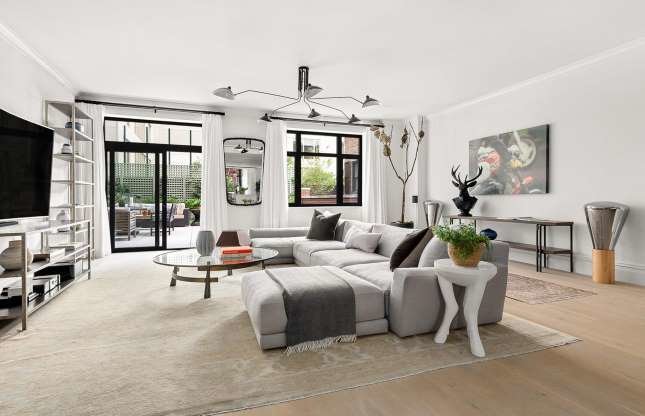
The sophisticated condo isn't shore of luxury amenities and comes with its very own private lift, which leads through to a formal hallway and open-plan living space with high ceilings and stained white oak floorboards.
October: Joe Jonas and Sophie Turner's New York City condo

The three-bed, three-bath home covers 2,900 square feet of space and includes a master bedroom that has direct access to the terrace, as well as a huge walk-in wardrobe and a glamorous all-white ensuite bathroom.
October: Joe Jonas and Sophie Turner's New York City condo
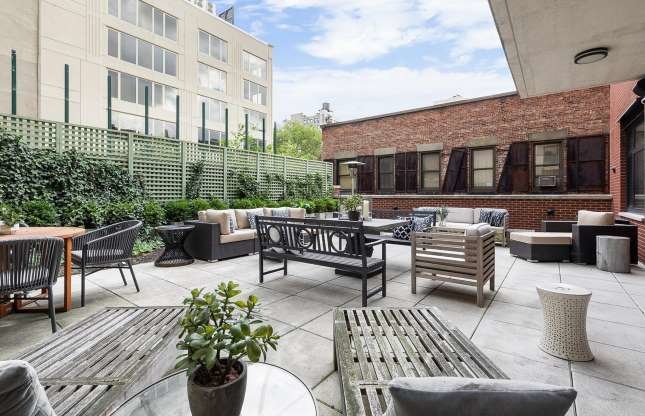
The 1,500-square-foot terrace would have been a fun space for the young couple to entertain, although it's not completely private and is overlooked by neighbouring apartments. Situated in a state-of-the-art building, the new buyer will have access to a number of amenities including a 24-hour doorman, concierge service and a screening room.
November: Pierce Brosnan's oceanfront estate
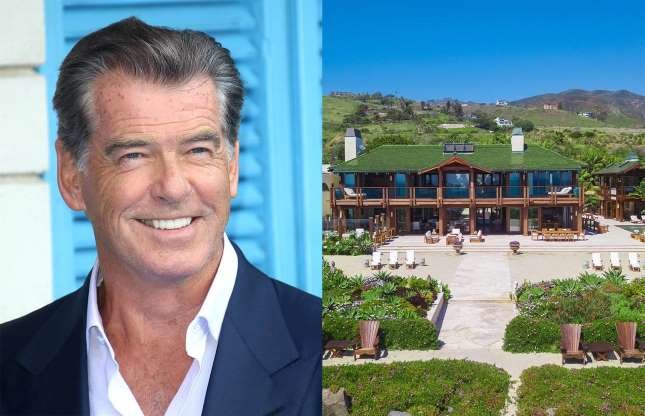
In November, the hottest celebrity homes included two amazing properties listed by Tommy Hilfiger and a modern farmhouse snapped up by Cameron Diaz. However, nothing compared to Pierce Brosnan's longtime home in Malibu which he put on the market for a whopping $100 million (£75m). The Thai-inspired billionaire bolthole was built in 2010 after Brosnan purchased two lots of land in 2000 for less than $10 million (£7.5m). Hidden behind twin carved teak entry gates, 'Orchid House' sits under a green clay-tiled roof and is still on the market today.
November: Pierce Brosnan's oceanfront estate
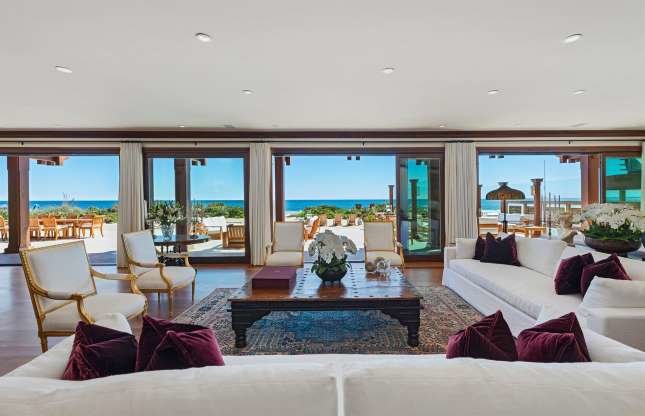
With 13,000 square feet of space between the main home and poolhouse, the main house has been built in a U-shape and has a light-filled open floor plan. The living and dining area features wide-plank teak floorboards, scissor truss ceilings and floor-to-ceiling windows, with the multipurpose space spilling out into the exotic grounds.
November: Pierce Brosnan's oceanfront estate

With five bedrooms and 14 bathrooms, the home was the ideal place for the couple to entertain friends and family. In the main house, the master bedroom sits on the upper floor and boasts two fireplaces, two bathrooms and two dressing rooms. Full of world-class amenities, the property also has a screening room, a gym and a Japanese-style spa.
November: Pierce Brosnan's oceanfront estate
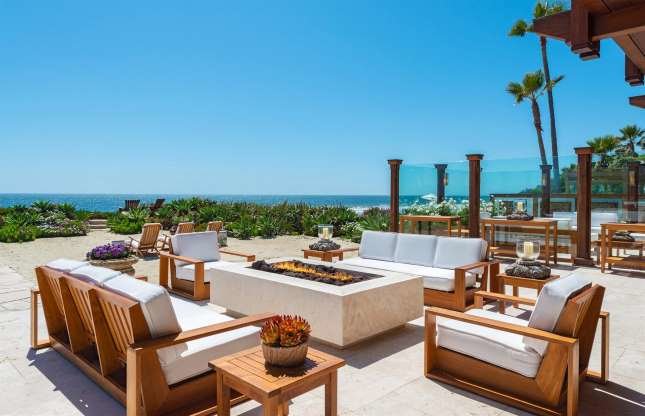
In addition to the main house, the grounds also hold a two-storey poolhouse complete with a bar and a sitting area. The perfect spot for some serene relaxation, the saltwater pool is surrounded by landscaped grounds and a path leading directly to the property's private beach. Luxury living doesn't get much better than this!
December: Winona Ryder's San Francisco home
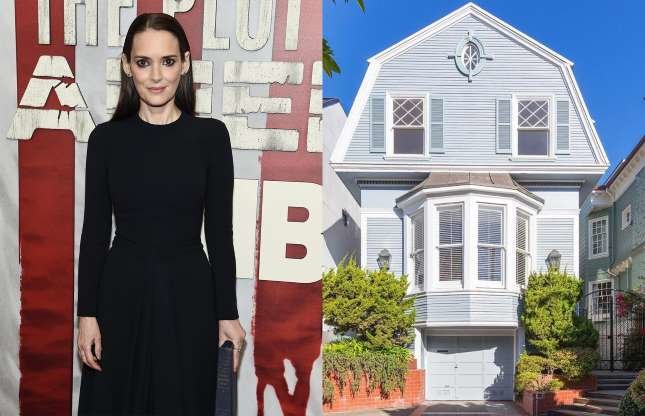
In December, still more celebrity homes will hit the real estate market, including Ellie Goulding's London pad and Winona Ryder's long time San Francisco home. Listed for just shy of $5 million (£3.8m), the star has owned the home since 1995, when she bought it for just $1.3 million (£980k).
December: Winona Ryder's San Francisco home

Built in 1902, the three-bedroom home is spread over three floors and is the perfect mix of period details and modern-day décor. The formal living room, which is located at the front of the house, boasts a traditional-style fireplace, high ceilings and fresh white décor. Adjacent to the space sits an informal living room that leads through to the dining room and kitchen.
December: Winona Ryder's San Francisco home

Upstairs there are three bedrooms, with two having access to the deck that overlooks the lush gardens below. The upper floor also boasts a walk-in wardrobe and two bathrooms with luxurious bathtubs and showers.
December: Winona Ryder's San Francisco home
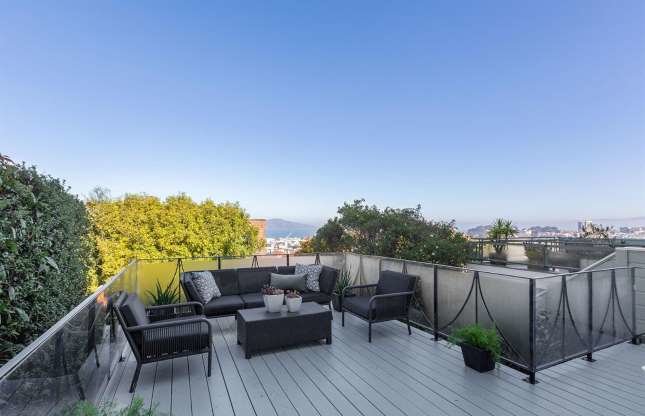
Not without lush outdoor space, the home has a long garden and an upper deck that's perfect for indoor-outdoor living. If all this wasn't enough, the lower floor is home to a media room with a play area, extra parking and a laundry room. What a way to finish the year!
